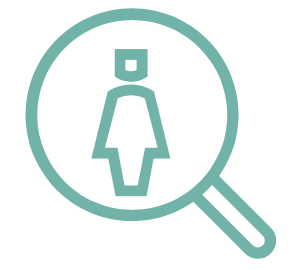Attraction

Water institutions often do not attract woman due to entrenched social norms and practices.
However, attracting more female candidates can bring numerous benefits to a company, including increased financial productivity, greater innovation, and improved customer satisfaction.
Barriers
- Stereotypes and social norms
- Occupational segregation
- Low level of female graduates in technical fields
- Lack of role models
examples of promising approaches
- Career talks, role models and other outreach campaigns
- Bring your daughter to work day
- Scholarships for women in STEM studies
RECRUITMENT

fewer women are recruited to water institutions (in past year)

20% of all workers recruited are women

22% of engineers recruited are women

24% of all managers recruited are women
Barriers
- School-to-work transition bottlenecks
- Female graduates are not targeted as candidates
- Gender biases in the hiring process
examples of promising approaches
- Women engineers recruited directly from universities
- Inclusive job advertisements
- Gender-balanced hiring committee
Retention

FEMALE EMPLOYEES LEAVE UTILITIES AT A HIGHER RATE THAN MEN (PAST YEAR)

10.6%

7.1%
Barriers
- Lack of work-life balance
- Inadequate family-friendly policies
- Unsupportive workplace environment
- Wage gaps
- Sexual harassment
examples of promising approaches
- Maternity, paternity, and parental leave policies
- Separate sanitation facilities for men and women
- On-site lactation rooms
- Regular pay gap assessments
Advancement

women in water institutions do not always have the same opportunities as men to advance in their careers
Simple interventions and approaches can enable women to grow professionally, which can bring benefits to the organization, such as by improving employee satisfaction and thereby driving performance results.
Barriers
- Fewer training, mentorship, and networking opportunities
- Exclusion from opportunities for advancement and leadership
examples of promising approaches
- Transparent promotion process and promotion criteria
- Awards to recognize female leadership in the field
- Equal access to technical and managerial training for all